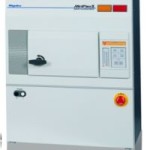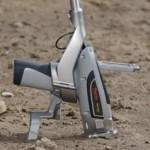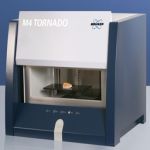In the Laboratory, the following instrumentation is available:
Allows the identification of crystalline compounds in a sample and to qualitatively and quantitatively determine the composition of solid crystalline samples such as: soils, sediments, rocks, cements, building materials, etc.
Allows to determine quickly and directly in the field the semiquantitative chemical composition (from K to U) of solid matrices such as: soils, sediments, rocks, alloys, building materials, etc.
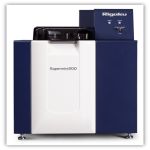 Wavelength dispersive X-ray fluorescence
Wavelength dispersive X-ray fluorescence
This instrument allows to determine with a high precision the quali-quantitative elemental composition (from O to U) of both solid and liquid samples: soils, sediments, rocks, building materials, oils, vegetal samples, etc.
This instrument allows to focus the X-rays down to a beamsize of 20 microns thus making this equipment capable of mapping the spatial distribution of elements from Na to U both in microscopic samples and in larger specimens. Being this technique non-destructive, this instrument is particularly suitable for the analysis of samples with a high scientific, artistic or commercial value.
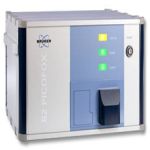 Total reflection X-ray fluorescence
Total reflection X-ray fluorescence
Allows to detect extremely low concentrations (ppb) of elements from Al to U, both in liquid and solid matrices. The small sample volumes needed to perform this type of analysis make this instrument particularly suitable to study biological fluids as well as microscopic samples.
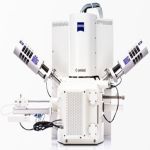 Field emission scanning electron microscopy and EDX microanalysis
Field emission scanning electron microscopy and EDX microanalysis
Allows the observation of all types of samples, both organic and inorganic, with an extremely high resolution and down to the nanometer scale. In addition, the observed field of view can be chemically analysed by means of a microanalysis system which allows to get detailed elemental distribution maps. This instrument is particularly suitable to study particulate matter.
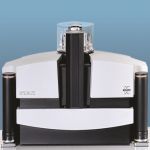 High resolution micro X-ray tomography
High resolution micro X-ray tomography
This instrument allows to investigate directly and non-destructively the internal structure of solid samples with a resolution down to few hundreds of nanometers. With this technique the internal porosity of materials can be easily assessed and visualised. Since this analytical methodology is non-destructive, samples of high scientific, artistic or commercial value can be easily imaged and studied.
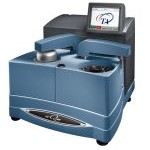 Differential Scanning Calorimeter
Differential Scanning Calorimeter
This instrument allows the determination of transition temperatures for different materials as well as to assess the heat flow occurring in the materials for a wide variety of transitions and events as a function of temperature.
It is particularly useful to study organic materials, polymers and pharmaceuticals
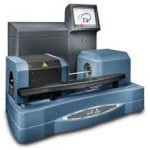 Thermogravimetric Analyzer/Differential Scanning Calorimeter
Thermogravimetric Analyzer/Differential Scanning Calorimeter
This device is intended for the simoultaneous determination of weight changes (TGA) and true differential heat flow (DSC) on the same sample from room temperature to 1500°C.
These analyses are suitable for organic samples, inorganic samples (e.g. ceramics, soils, minerals), polymers, pharmaceuticals, food products, and biological samples.
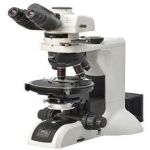 Optical microscope with polarized light and hot stage
Optical microscope with polarized light and hot stage
This microscope is intended for observations with polarized light and is equipped with hot stage for thermal dynamic microscopy, digital camera capture, and computer for instrument management.
Different types of samples can be observed and investigated: organic compounds, inorganic materials (e.g. ceramics, soils, minerals), polymers, pharmaceuticals, food products, and biological samples.
